What is ball reversal in basketball
Ball reversal, also referred to as the reverse pass, or reversing the ball, is a common offensive tactic that occurs when the ball gets passed from one side of the court towards the other side, typically from the wings to the top or via skip passes in certain instances.
Why is ball reversal effective in basketball
Ball reversal is an effective action in basketball because it can break down the defense, particularly on the weak side, by causing errors.
Essentially, when the ball gets passed to a side of the floor, each of the defenders will typically shift in the direction of the ball.
However, if the ball is quickly reversed to the opposite side, the defenders on that same side, which is also the new strong side, will most likely not be able to recover quickly enough to efficiently guard an offensive player with the ball on that side of the floor or even off-ball players on that same side as well.
When this occurs, that could lead to defensive mistakes such as poor defensive closeouts, uncontested jump shots, or dribble drive penetration, which are all beneficial for the offensive team and detrimental to the defense.
What are examples of simple ball reversal in basketball
Example 1
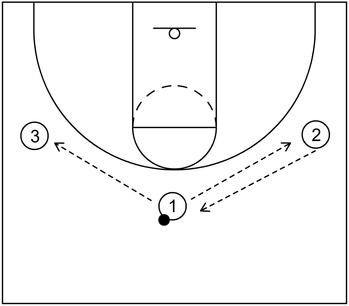
This is an example of simple ball reversal in basketball. To start, 2 receives the ball from 1 and then quickly initiates the ball reversal action by passing it back to 1. Afterwards, 1 completes the ball reversal by passing it to 3.
Example 2
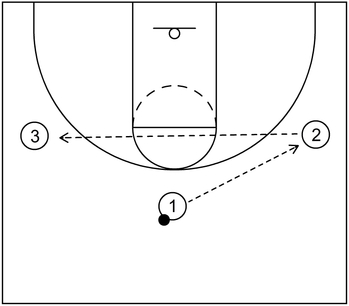
This is another example of simple ball reversal in basketball. To begin, 2 receives the ball from 1 and quickly completes the ball reversal action by executing a skip pass to 3.
What are examples of simple basketball plays that use ball reversal
Example 1
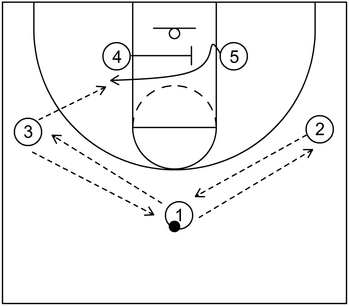
This is an example of a simple basketball play that utilizes ball reversal to create a scoring opportunity near the basket. To start, 2 receives the ball from 1 and then initiates the ball reversal by passing it back to 1.
Afterwards, 3 receives the ball from 1 to complete the ball reversal and as that happens, 5 cuts to the left side low post via the cross screen set by 4. From there, 5 can score with a short jump shot or low post move.
Example 2
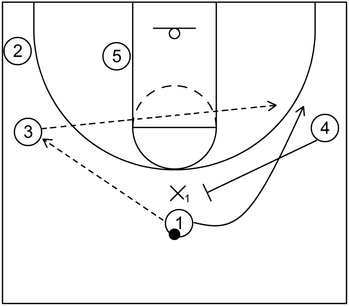
This is an example of a simple basketball play that uses ball reversal to create a scoring opportunity from the perimeter.
To begin, 3 receives the ball from 1 and after that, 1 cuts across to the right side wing via the flare screen set by 4.
Next, 3 completes the ball reversal by passing it to 1. Following that, 1 takes the open three-point jump shot.
Example 3
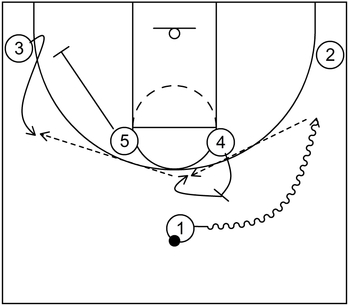
This is an example of a simple basketball play that uses ball reversal by way of a dribble entry and basketball screens. To start, 1 dribbles to the right side wing via the on-ball screen set by 4.
From that point, 4 pops to the top and receives the ball from 1 to initiate the reversal action.
As that occurs, 3 cuts to the left side wing via the wide pin down screen set by 5. Afterwards, 3 receives the ball from 4 to complete the ball reversal and then 3 could take the open jump shot.
Example 4
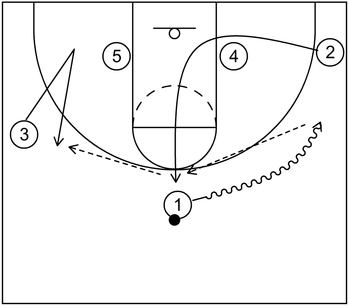
This is another example of a simple basketball play that implements ball reversal for a potential perimeter scoring opportunity.
To begin, 1 executes a dribble entry to the right side wing. When that occurs, 2 executes a zipper cut to the top.
Next, 2 receives the ball from 1 to initiate the ball reversal. Afterwards, 3 gets open with a V-cut and then receives the ball from 2 to complete the ball reversal. From that point, 3 could take the jump shot if open.
Example 5
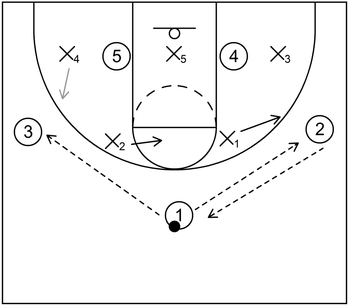
This is an example of a simple basketball play that features ball reversal against a 2-3 zone defense. To start, 2 receives the ball from 1, which influences the zone defenders to shift, represented by the black arrows.
Next, 2 initiates the ball reversal by passing it to 1. Afterwards, 3 quickly receives the ball from 1 to complete the ball reversal action and then 3 could could take the three-point jump shot if open.
Also, when that happens, X2 would probably not have enough time to guard 2. Therefore, X4 will most likely closeout, represented by the gray arrow to not give up an uncontested jump shot by 3.
Following that, if 2 did not take the jump shot, then X2 would most likely recover and then bump X4 to the back of the zone.
What is an example of a ball reversal drill
Part 1
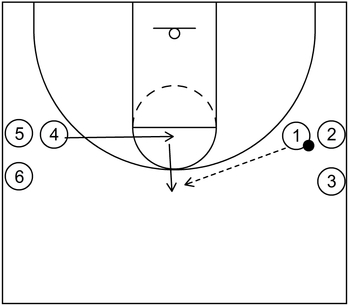
This is an example of a ball reversal drill that works on footwork and hand/eye coordination derived from Fast-Paced Skill Development Drills by Kelvin Sampson. For the set-up, players form two lines on the left and right side wing areas.
For this example, the right side begins with the ball but in actuality, the left side could start with the ball as well. To begin, 4 immediately cuts to the high post area, pops out to the top, and then receives the ball from 1.
Part 2
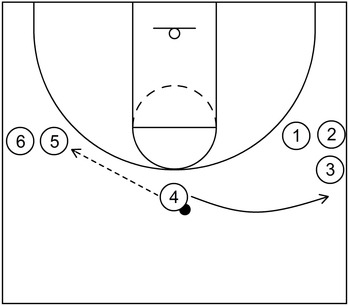
Next, 5 receives the ball from 4, which completes the ball reversal action. After that, 4 cuts to the back of the right side line.
Part 3
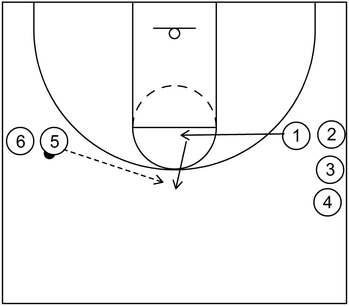
The drill begins again with 1 cutting to the high post area and then popping out to the top. Once that happens, 5 initiates the ball reversal by passing it to 1.
Part 4
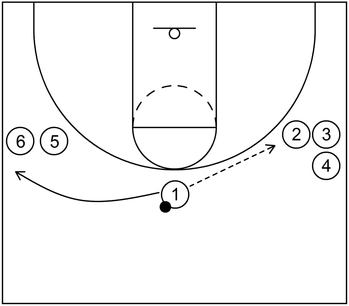
Next, 2 receives the ball from 1, which completes the ball reversal. Afterwards, 1 cuts to the back of the line on the left side.
It is not shown on the diagram but from this point, 5 would cut to the high post area, pop out to the top, and receive the ball from 2.
This drill could continue for a certain amount of time or until all of the players participated in each line at least one time.